Should I Replace My Roof If It Is Not Leaking?
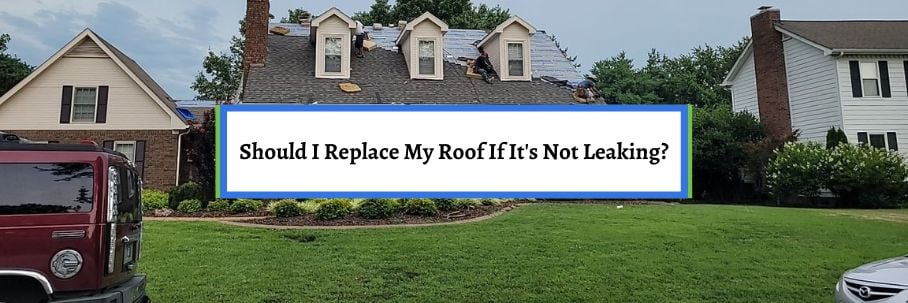
Let’s be honest; no one wants to replace their roof. Unfortunately, getting a roof replacement is usually a decision that’s made for you by leaks or some other kind of damage.
But a well-installed roof with quality materials may not leak until it’s reached its maximum lifespan. So, that begs the question, should you replace your roof even if it’s not leaking or wait until a leak shows up?
For over 30 years, the team at Bill Ragan Roofing has taken pride in helping homeowners understand their roof and what it’s telling them. That’s why I’ll break down what you need to know about replacing a leak-free roof.
This article covers the following:
- Should you replace your roof if it’s not leaking?
- Why would you replace your roof if it’s not leaking?
- 3 visible signs that tell you it’s time for a roof replacement
Should you replace your roof if it’s not leaking?
Under normal circumstances, there’s no reason to replace your roof if it’s not leaking. However, it really depends on the age of your roof when you’re considering a replacement.
Let’s say your roof is 20 years old with an architectural asphalt shingle as the roofing material.
Architectural shingles should last around 25 years with proper installation and adequate attic ventilation. If there are no active leaks, you still have a few more years before the roofing materials reach the end of their lifespan.
In this scenario, there’s no immediate need for a roof replacement. However, it’s coming, and you should start budgeting for a new roof because a leak can show up anytime.
While there may not be an urgent problem, you’re playing against the clock with an old roof. Waiting too long leads to leaks and all the problems associated with them.
Even worse, these leaks may take a while to show up in your home, causing all kinds of damage along the way. That’s why I recommend replacing your roof when it’s at or close to its maximum lifespan, whether it’s leaking or not.
Why would you replace your roof when it’s not leaking?
You just learned there’s no reason to replace a roof that’s not leaking unless it’s on the older side. However, there are situations where some homeowners get a replacement even if their leak-free roof hasn’t reached the end of its life.
Below are the other reasons homeowners replace a leak-free roof:
- Increase the home’s value and curb appeal when selling a home
- The roof is a pain point for potential home buyers
- Storm damage leads to an insurance claim
- Other homes in the neighborhood are getting replaced
- Interest in upgrading to a different roofing material
The truth is, most of these reasons won’t make sense for the average homeowner. With the size of a roof investment, most homeowners can’t replace their roof just to increase its value, raise curb appeal, or upgrade their roofing material.
On the other hand, things like storm damage or other homes getting new roofs are good signs that it’s time for a replacement, even if you don’t have active leaks.
3 visible signs that tell you it’s time for a roof replacement
You should understand by now that there’s no reason to replace a roof without problems unless it's near the end of its lifespan. While it’s easy to say in practice, you probably can’t look at your roof and say, “Yep, it’s time for a replacement.”.
Luckily, there are visible signs telling you it’s time for a new roof.
1. There are loose granules on the ground and gutters
Granules are pieces of asphalt embedded in shingles for fire resistance, color, and UV ray protection. A huge sign that it’s time to replace your roof is finding loose granules in gutters or on the ground around downspouts.
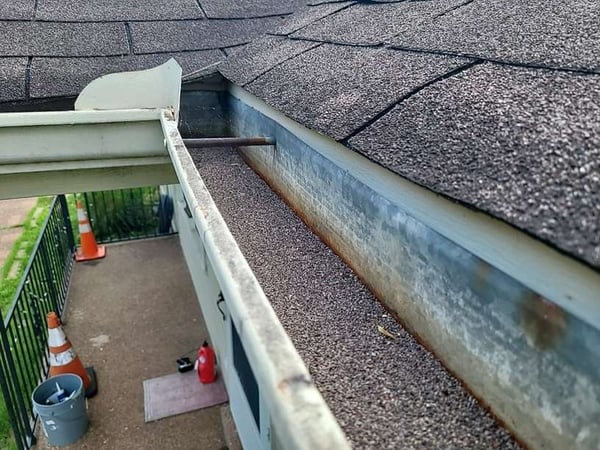
Losing granules is natural as your roof goes through wear and tear, so finding them on an older roof is not surprising. However, strong hail storms or a lot of little hail also cause shingles to lose these protective granules.
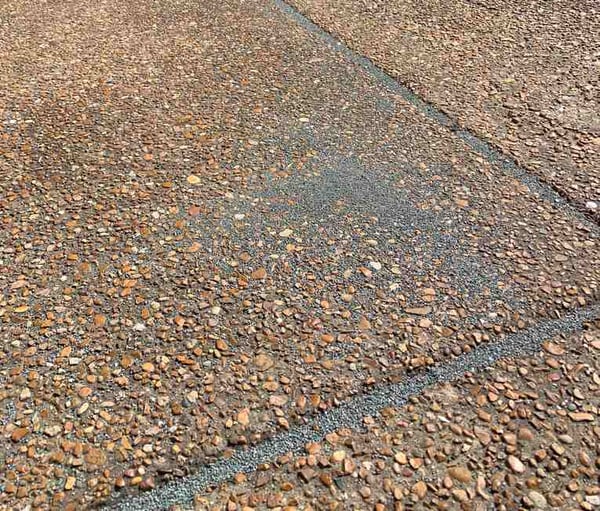
In this case, you might have an insurance claim if you notice loose granules after a big storm. But no matter the situation, loose granules are a huge sign that it’s time to start budgeting for a roof replacement.
2. Damaged or missing shingles
The next sign your roof needs to be replaced is if your shingles are damaged (cracking or curling) or missing altogether. Finding cracked or curled shingles is a clear sign that your roof has reached the end of its lifespan.
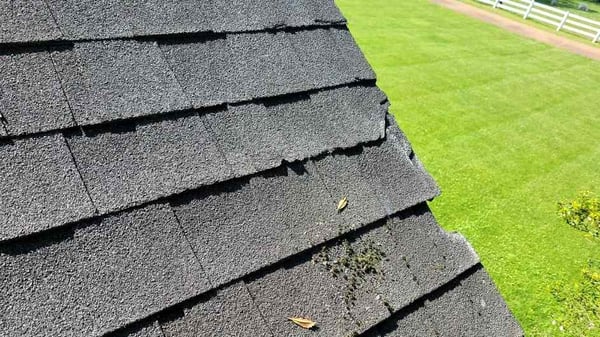
When you see shingles like this, there’s nothing left to do but replace your roof. Unfortunately, you’ll most likely have to get on your roof to notice them.
On the other hand, missing asphalt shingles are more obvious and easier to spot. In this situation, the amount of shingles ripped off and their availability determines whether or not you get a new roof.
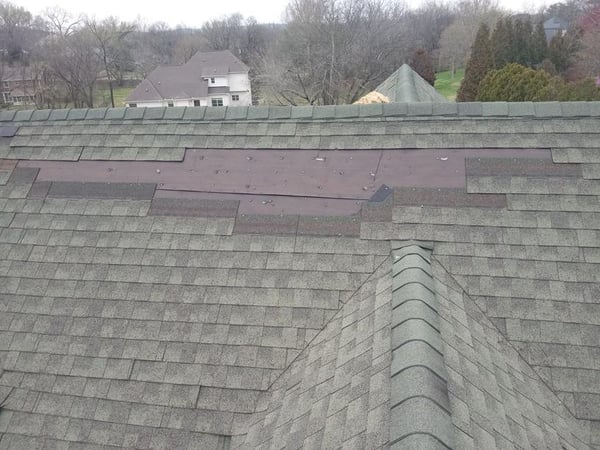
You may even have a viable insurance claim if wind caused the missing shingles. However, improper installation is the main cause of missing shingles and always leads to a replacement well before you should need one.
3. There’s moss or other vegetation growing on the roof
The next visible sign that it’s time for a roof replacement is when you see vegetation growing. Moss or other vegetation growth is a huge sign it’s time to start considering replacing an older roof.
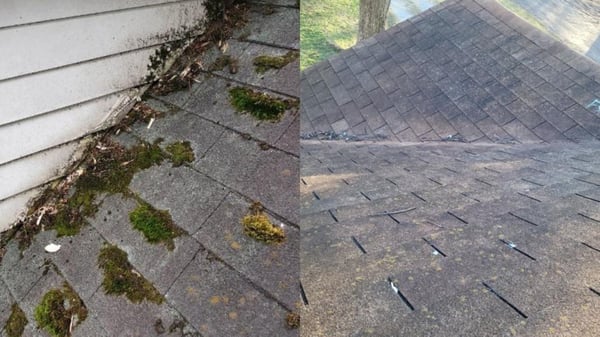
Along with moss or other green vegetation, your roof may also have some black streaks caused by algae. While algae grows on a 10 to 15-year-old roof, it doesn’t necessarily mean it’s causing issues or that the roof needs to be replaced.
You can actually clean algae off your roof if you don’t like seeing black streaks. However, do your research and hire a professional roof cleaning company that knows how to soft wash.
What do you need to consider before replacing your roof?
At the end of the day, replacing a roof that’s not leaking is your decision. However, I always recommend a replacement if the roof is on the older side near the end of its life.
This simply ensures you can continue enjoying a leak-free roof and avoid costly damage instead of waiting until a leak shows up. And remember, you’ll definitely know it’s time to contact a local roofer for a roof replacement inspection if you notice the signs above.
But before reaching out to a roofing contractor, there are some things you need to consider that set you up for success right off the bat. The last thing you want is to go into a meeting about a large investment unprepared or, worse, get taken advantage of.
That’s why I wrote another article breaking down the seven things every homeowner should consider before a roof replacement.
Check out 7 Things to Consider Before a Roof Replacement to go into the roof replacement process with the knowledge you need.


